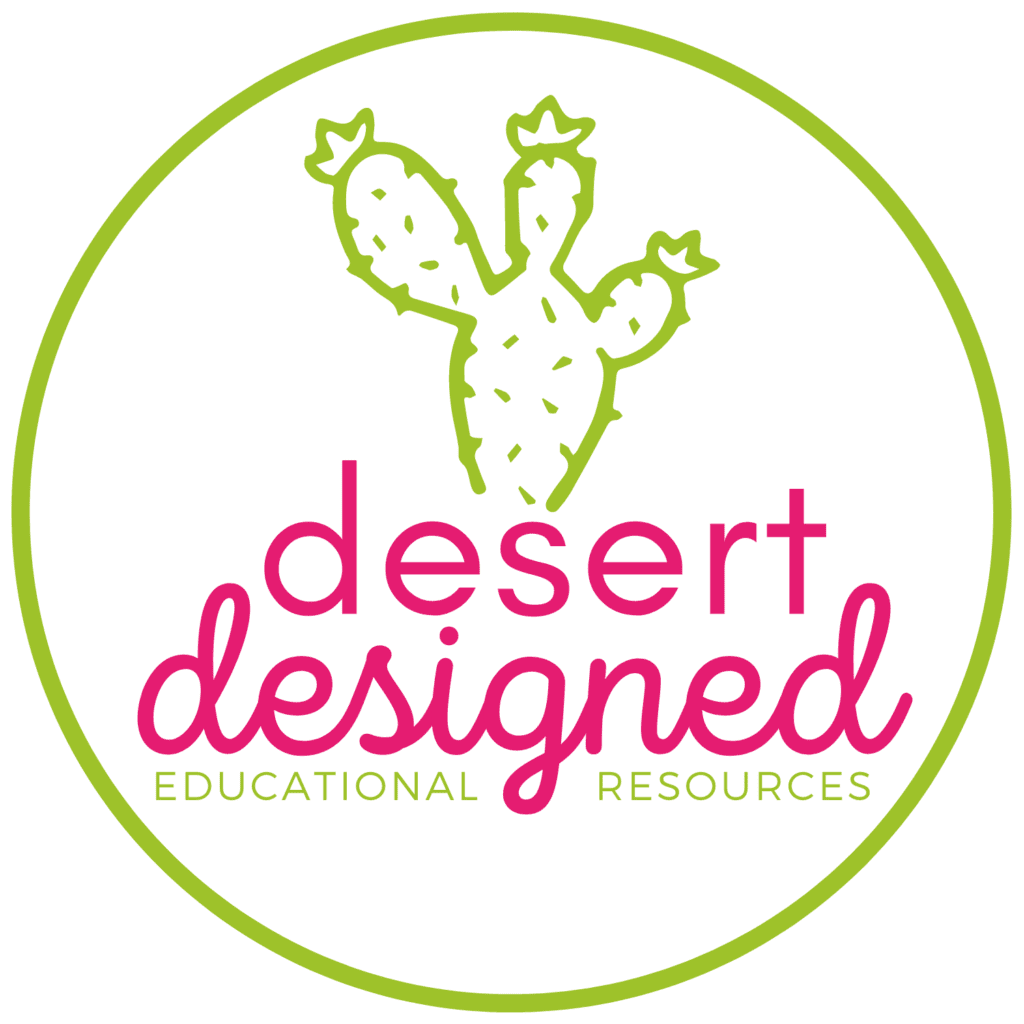Picture books for math lessons can make things interesting for students. Some teachers are hesitant to try something new.
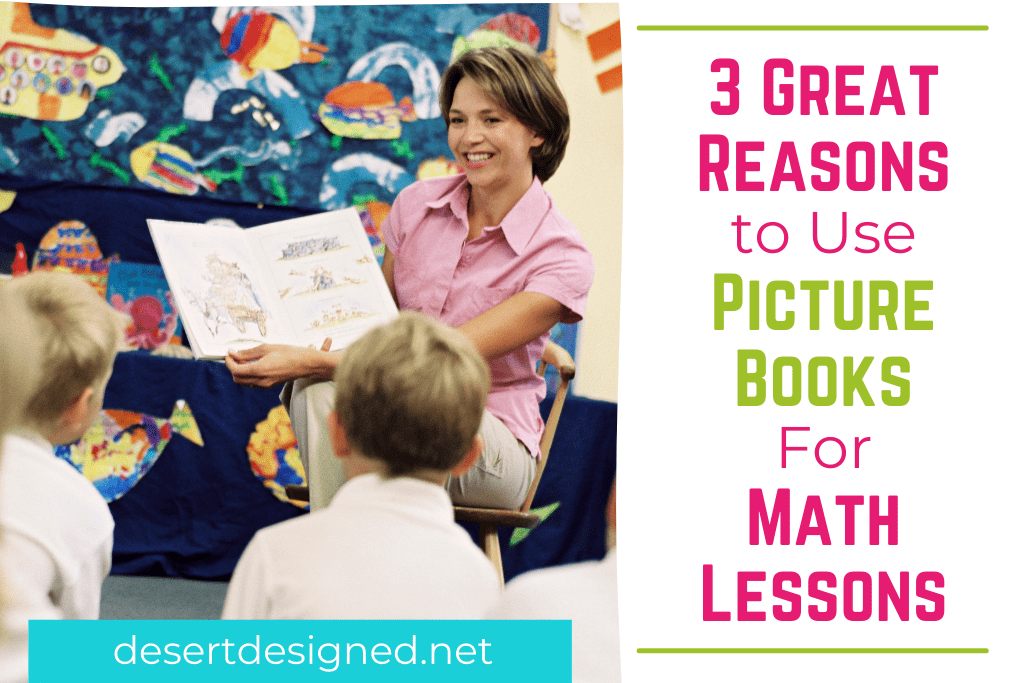
One of my favorite classes I took during my teacher education program was a course on using children’s literature. The absolute best thing about it was that the instructor read us a new picture book every day. I was always excited to go to that class and thoroughly enjoyed my time there.
There are many advantages to using picture books in math lessons. In this post, I highlight several benefits of using children’s literature with your students. We will also discuss designing a math lesson around a children’s book, some do’s and don’ts, and some of my favorite math picture books.
Reason 1: Picture Books for Math Lessons are Calming
Many students have a great deal of anxiety about learning math. There can be a lot of pressure to remember all the proper steps to solve a problem. For certain types of learners, mathematical reasoning feels beyond reach. Many times, these are kids who prefer reading and literacy-based activities.
By reading picture books with students, you bring a sense of calm to the room. Listening to a picture book is a very low-pressure activity. There is little urgency to perform or get things right when listening to a picture book.
For many kids, when we remove this pressure, they open their minds to learning something new. These students will suddenly be able to make connections within math that they may have previously struggled with.
When we read aloud to students, they can sit back, relax, and listen. If you have a highly anxious class or group, reading a picture book can be a fantastic, low-pressure way to introduce, review, or reinforce a math concept. As you read, allow the students to listen. Slowly work them into the math side after they have had a chance to enjoy the story!
When appropriate, you may want to stop reading to address the math taking place, but think about if those math problem-solving questions can wait until you have finished the book. If the book is short, you can even read it a second time and pursue the problem solving during the second read.
Reason 2: Picture Books for Math Lessons are Memorable
Many days follow the same pattern. In our minds, they meld together. However, looking back, I bet you have some memories that stand out for you. When you think about what these memories have in common, you will realize that they all have something novel about them.
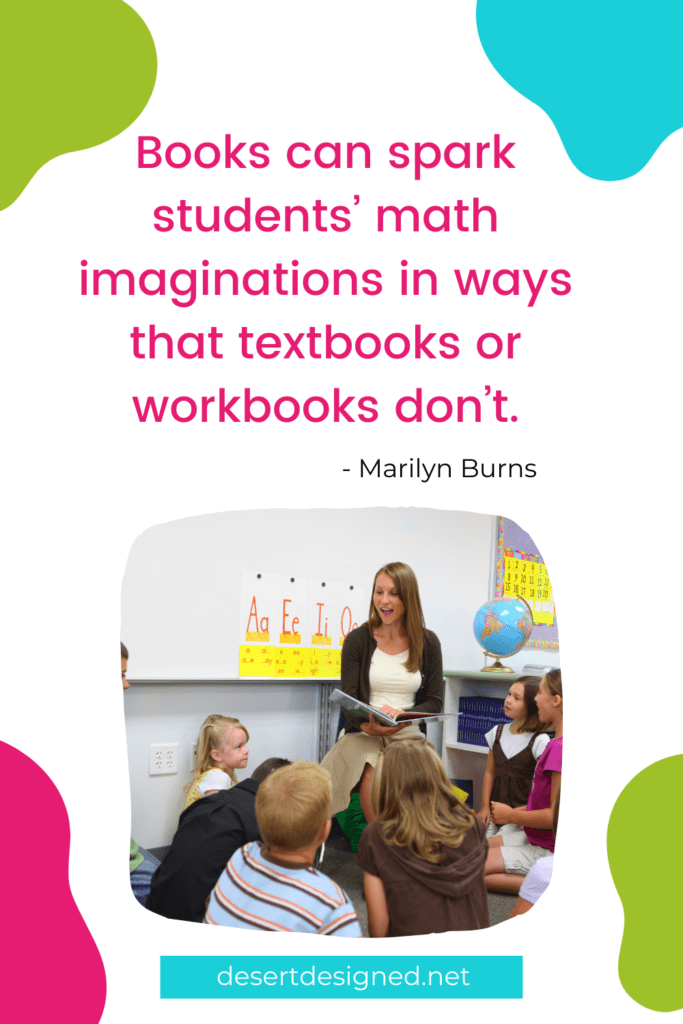
One of the struggles with math is helping students remember the lessons we teach. Kids learn SO many new math concepts each year, making it difficult for them to keep it all straight. Experiencing math through literature is not an everyday, commonplace activity for most students. By introducing or teaching math through a picture book, you bring kids a new way to look at the math you are exploring. Later in the year, when you are revisiting a math topic you read a book for, you can remind the kids. “Remember when we read The Lion’s Share? What we are doing is just like what we learned in that book!”
Also, people (not just kids) love stories! They help us remember events and are easy to picture in our minds. Math is not easy to imagine for all kids, but you bring that imagery to life by introducing children’s literature in your math lesson!
Reason 3: Picture Books for Math Lessons Help Make Connections
How many times have you been asked during math class: when will I ever use this in real life? Every time I hear that question, I tense up. Sometimes, the kids are right. The skill in question may not often be used in isolation in real life. Of course, this does not mean that the knowledge isn’t valuable! As educators, we know that many of the skills we teach prepare students for more complex skills to come.
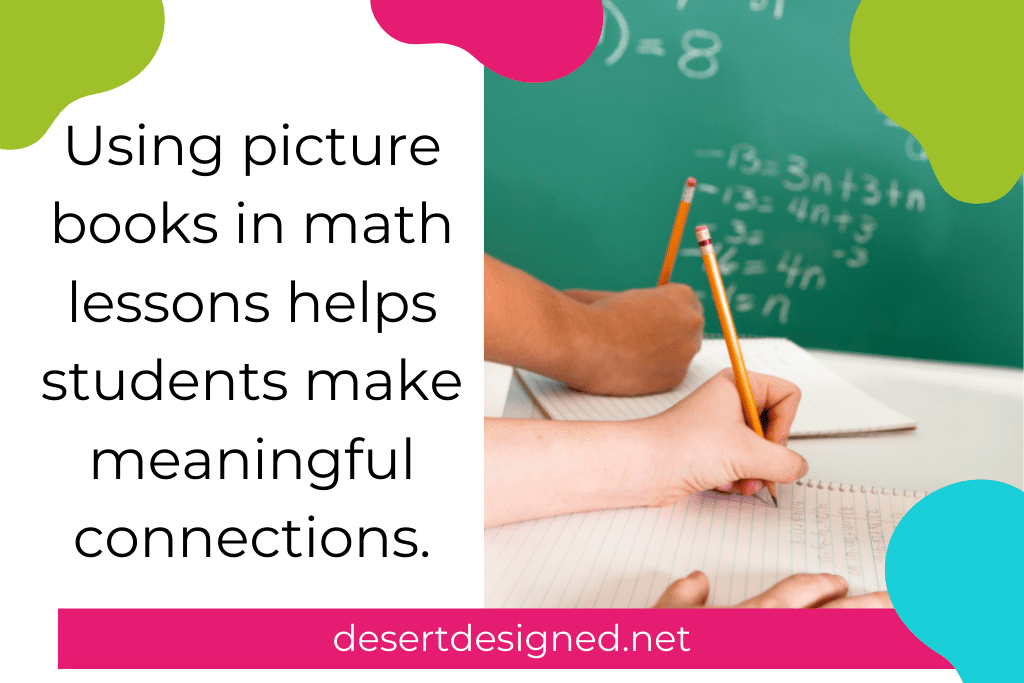
Picture books can help make connections for students in multiple ways. Although the stories may not always be realistic, they can help our kids see math in action and make connections using math in other contexts.
In the fabulous story, A Remainder of One by Elinor Pinczes, 25 ants march in neat rows. For one little ant, each time the ants organize themselves into a new configuration, he gets left out as the 25th ant.
Kids are quickly able to make the connection between this book and division with remainders. They can also connect the book to their own experiences of trying to make equal groupings of other items or even people in real life. Often, by hearing the examples in literature, kids can take the abstract math concepts and make them come to life!
How to Use Picture Books in Math Lessons
The specifics of each lesson you teach using picture books may change; however, you can follow a basic format when using literature in your math lessons.
- Read the book out loud for your class. Let the students hear and enjoy the story.
- As a class, discuss the book and engage students in sharing their ideas about the math involved in the text.
- Give an assignment, project, or problem to the class related to the math found in the book.
- After allowing students time to work, discuss the work again with students and connect it to the reading.
- Assign follow-up work related to the math content found in the book for homework or extra practice.
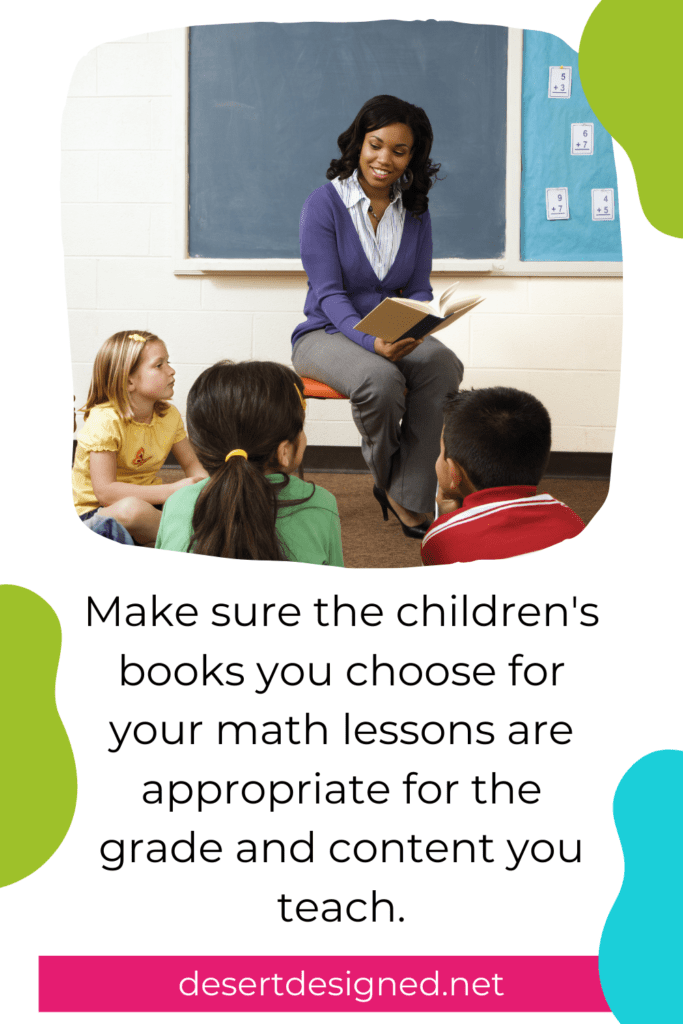
Do’s and Don’ts of Using Math Picture Books in Your Lessons
Do
- Make it fun
- Take time to be explicit about the math concepts addressed
- Pre-read the book and make sure it is appropriate for your grade level and math content
- Provide additional practice or an activity related to the math in the book
- Choose a book that has content related to what you are currently teaching your class
- Take the time to have a math discussion with your students
- Enlist your students in discovering the math in the text
- Look for suggestions and lesson plans online to support your use of picture books in your classroom (like this site from the NCTM)
Don’t
- Rush through the book
- Read the book to your class without intention
- Simply read the book and then move on, expecting the book to teach the whole lesson
- Stop during the reading so many times that students lose the story and ONLY focus on the math
- Forget to show the pictures
- Be afraid to read the book multiple times
Some of My Favorite Math Picture Books
Here are some affiliate links to some of my favorite math picture books to use in the classroom. As an Amazon Associate, I earn from qualifying purchases.

